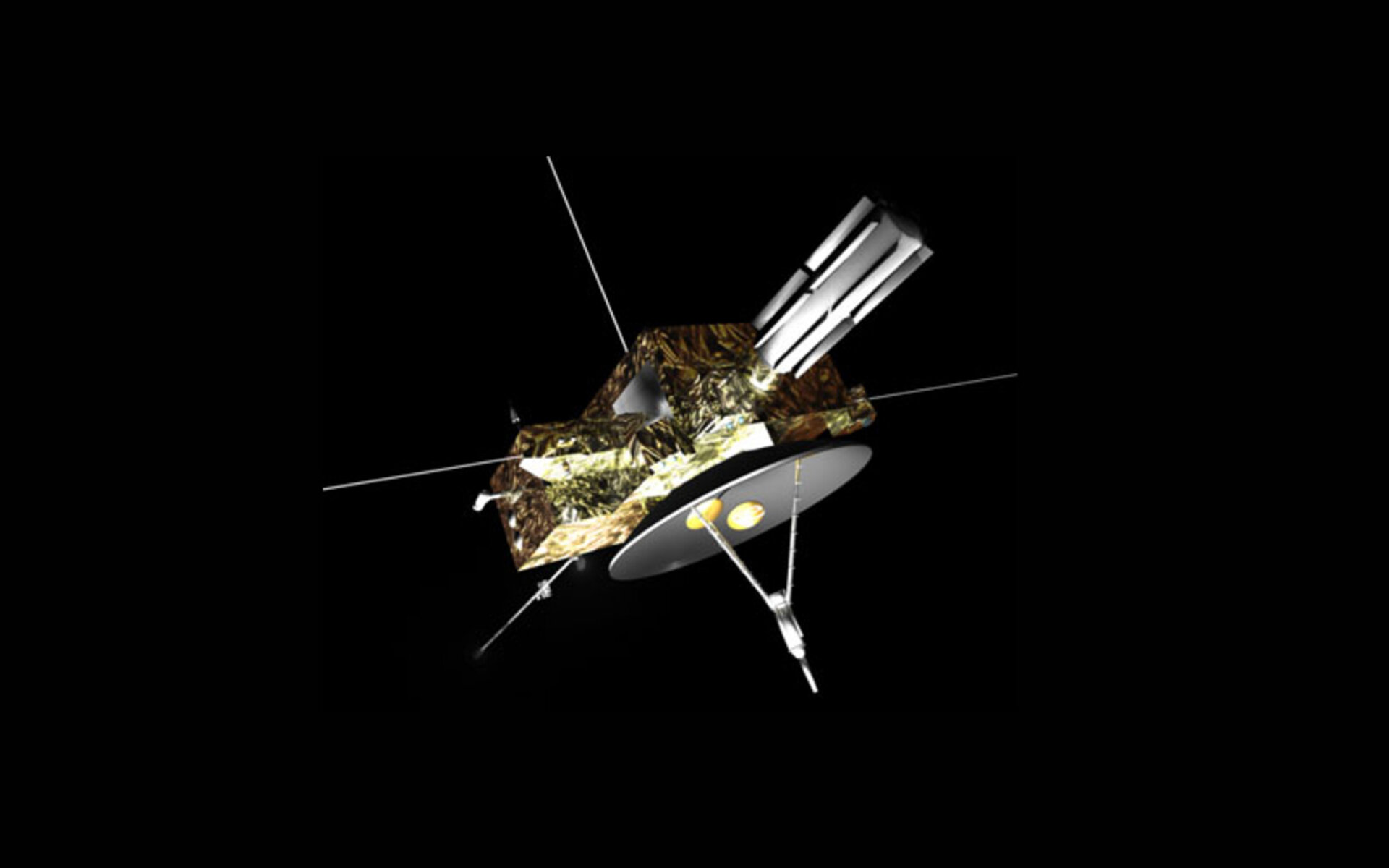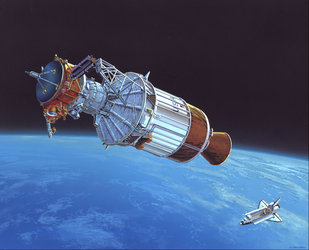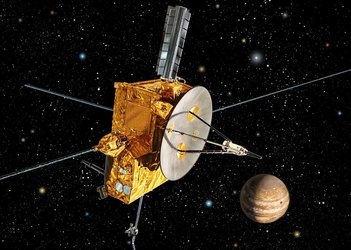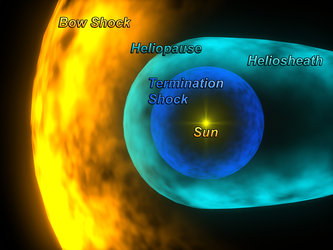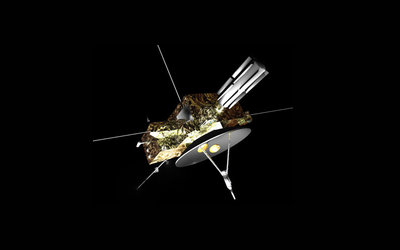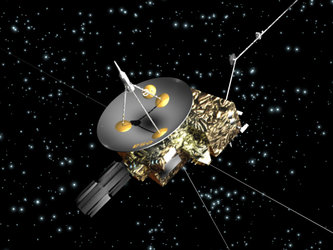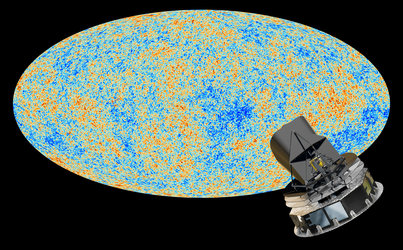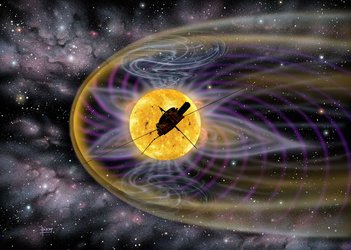Ulysses: the engineering challenge
If Ulysses had been human, with a life expectancy of 70 years, it would have just celebrated its 245th birthday, thanks to a dedicated ESA/NASA engineering team. In spacecraft years, the mission's life expectancy was five years. This turned into 17.5 years, 3.5 times what was envisaged.
“This mission wouldn't have been possible without excellent cooperation between ESA and NASA,” says Ed Massey, NASA Ulysses Project Manager. The mission officially began in 1977 and was launched from the Space Shuttle’s payload bay on 6 October 1990.
The first challenge for the team came soon after launch. When a 7.5-metre boom was deployed, the spacecraft started wobbling. This was potentially disastrous. The spacecraft was designed to point toward Earth and its scientific targets with an accuracy of 0.5º, but was wobbling by several degrees, threatening to severely degrade all observations.
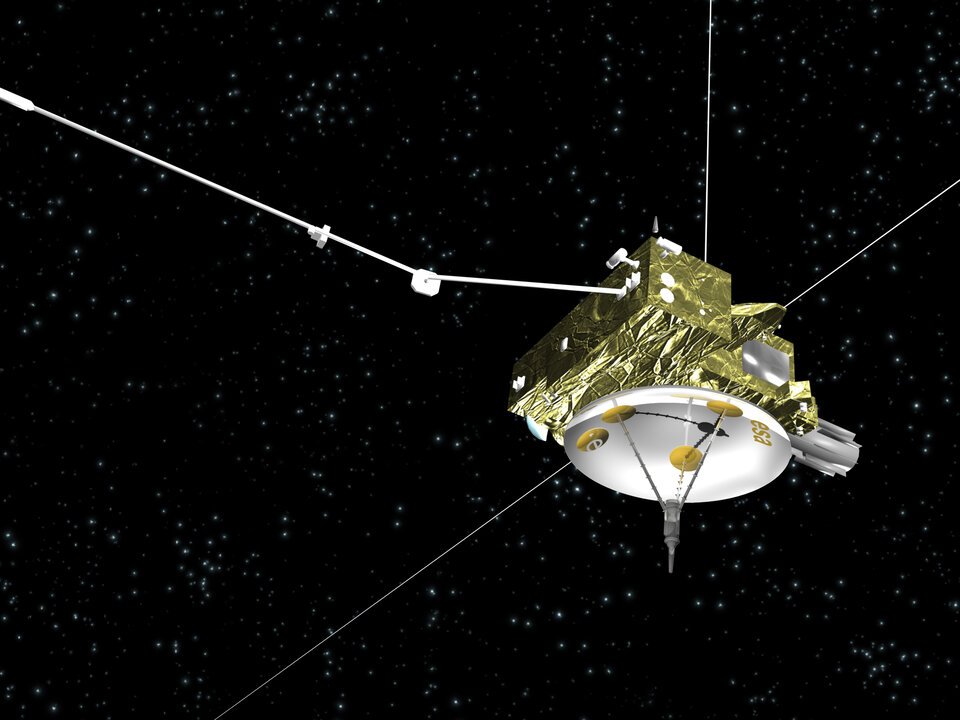
“For a while it was touch and go as to whether we were going to have a mission,” says Nigel Angold, ESA Ulysses Mission Operations Manager. The team analysed the problem, concentrating on the boom arm, and discovered that the Sun’s heat was causing the boom to flex. This in turn induced the wobble.
Once they had diagnosed the problem, they devised a way to use a spacecraft thruster to correct for this anomalous motion, enabling accurate observations. The team got to know the wobble so well that they predicted its reappearance in February 2007 almost exactly.
After the first solar pass in 1994-95, the mission was extended and the team faced the challenge of keeping Ulysses alive. It was challenging because the power available to the spacecraft was constantly ebbing away. Ulysses uses a small Radioisotope Thermoelectric Generator (RTG). Due to the half-life of the radioactive heat source, the amount of power available gradually decreases with time. Over its lifetime, Ulysses has lost almost a third of its available power.
This meant that not all of the instruments and systems could remain switched on. Since 2002, the team has been running the spacecraft with one or more of the instruments turned off at any one time. Other systems have been turned off intermittently, too.
The lack of power has another effect, one that is potentially disastrous. The spacecraft must keep warm - otherwise its thruster fuel will freeze. Once this happens, as it inevitably will, there is no way to control the spacecraft.
We've continued to wring out every drop of data that we can from this mission.
But switching instruments off robs the spacecraft of heat. So the team had to be extremely careful to not switch anything off for too long and avoid creating cold spots within the spacecraft. Nursing Ulysses in this manner, they managed to coax it through a third solar orbit. “We've continued to wring out every drop of data that we can from this mission,” says Angold.
But, as the spacecraft began its fourth journey into deep space last year, the power drop became too serious and the team tried switching off the main transmitter. Unfortunately, the power supply failed and it could not be turned back on again. This has left a cold spot critically near a fuel line. “We're very worried about that spot. Once the temperature falls below 2ºC, the fuel will freeze,” says Angold.
With the imminent loss of control caused by the freezing fuel, ESA/NASA officials have decided that it is time to end the mission and celebrate its successes – a good time to say goodbye to an old friend.
“From an engineering point of view, you want a routine mission but this one has been anything but routine. Ulysses has been a challenge and all the more interesting because of it,” says Massey. “It's been like flying a different spacecraft each time. The on-board conditions have changed throughout the mission,” says Angold.
In recognition of the team's superb work, the Ulysses Mission Operations Team received the 2008 International SpaceOps Award for Outstanding Achievement.
For more information:
ESA Media Relations Office
Tel: +33 1 5369 7155
Fax: +33 1 5369 7690
Email: media@esa.int


